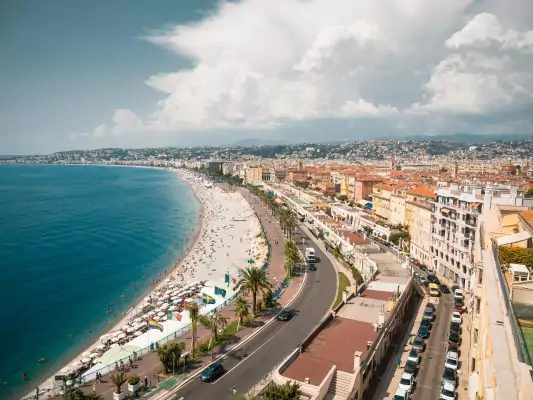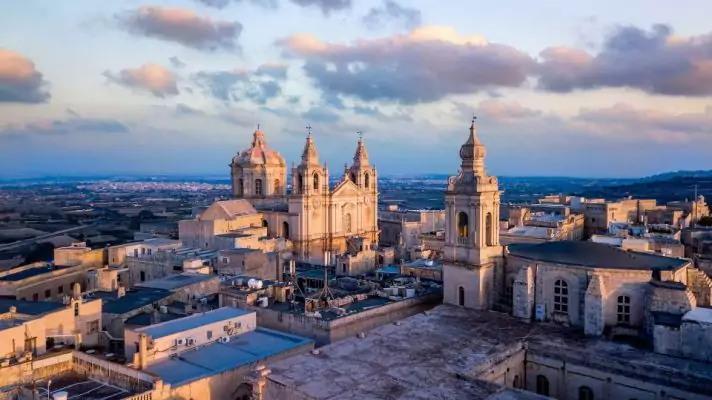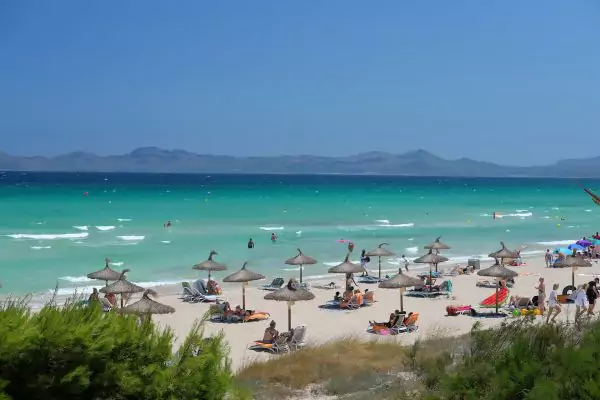Croatia Travel Guide – transportation, hotels, best beaches + itineraries for 7, 10 and 14 days

A complete Croatia travel guide with all the information you need regarding hotels, restaurants, transportation and the best travel tips for those visiting the country. We’ve also included three different itineraries with everything you should see and do in Croatia in 7, 10 or 14 days.
Considered the crown jewel of the former Yugoslavia, tourism has experienced remarkable growth in Croatia over the past couple of decades. From the nation’s independence to its admission into the EU and the Schengen Area, and most recently, the adoption of the Euro, visiting Croatia has progressively gotten more and more convenient.
As for the rest… Well, the rest can be attributed to the many charms of this small nation nestled along the Adriatic coast! The perfect destination for those seeking a healthy blend of beach relaxation and rich cultural experiences, in Croatia you can explore ancient walled cities established centuries ago by the Venetians and indulge in the crystal-clear waters of some of Europe’s finest beaches, all in in the same day. A truly great destination!
So, if you’re planning a trip to this stunning destination, our ultimate Croatia travel guide is here to help. In addition to practical information about hotels, restaurants, transportation and beaches, we’ve also put together three comprehensive itineraries, including all the places you must see and visit in Croatia in 7, 10 or 14 days.
Croatia Travel Guide

How to get to Croatia – Flights from the UK
Despite being such a small nation, there are several different international airports scattered around Croatia. As such, if you’re traveling from the UK, it is possible to fly directly to Croatia from the following airports:
- London-Heathrow: Zagreb (British Airways e Croatia Airlines), Pula (British Airways), Split (British Airways and Croatia Airlines) and Dubrovnik (British Airways)
- London-Gatwick: Pula (Easyjet and TUI), Split (Croatia Airlines, TUI and Easyjet), Zadar (Easyjet) and Dubrovnik (British Airways, Freebird Airlines, TUI and Easyjet)
- London-Stansted: Zagreb (Ryanair), Pula (Jet2 and Ryanair), Osijek (Ryanair), Rijeka (Ryanair), Split (Jet2), Zadar (Ryanair) and Dubrovnik (Jet2 and Ryanair)
- London-Luton: Pula (Easyjet) and Split (Easyjet and Wizz Air)
- London-City: Split (British Airways)
- Manchester: Zagreb (Ryanair), Pula (Jet2 and TUI), Split (Easyjet, TUI and Jet2), Zadar (Ryanair) and Dubrovnik (Easyjet, Ryanair, TUI and Jet2)
- Bristol: Pula (Easyjet), Split (Easyjet) and Dubrovnik (Easyjet and TUI)
- Birmingham: Pula (Jet2 and TUI), Split (Jet2), Zadar (Ryanair) and Dubrovnik (Jet2 and TUI)
- Leeds/Bradford: Split (Jet2), Zadar (Ryanair) and Dubrovnik (Jet2 and TUI)
- Edinburgh: Split (Jet2), Zadar (Ryanair) and Dubrovnik (Easyjet and Jet2)
- Glasgow: Pula (Easyjet), Split (Easyjet) and Dubrovnik (TUI)
- Bournemouth: Zadar (Easyjet)
- Liverpool: Zadar (Ryanair)
- Newcastle upon Tyne: Zadar (Ryanair) and Dubrovnik (Jet2 and TUI)
- Belfast: Dubrovnik (Jet2)
- East Midlands: Dubrovnik (Jet2 and TUI)
- Cardiff: Dubrovnik (TUI)
How many days do I need to visit Croatia?

Actually, if you’d like to explore the very best that Croatia has to offer, including all the transportation logistics, it would be wise to spend at least 2 weeks in the country.
However, for those with limited time and/or budget, a full week would be the bare minimum to experience the essentials in the Adriatic (Dubrovnik, Split and Zadar) and the capital city of Zagreb, while 10-12 days would be enough to check out the islands of Hvar and Korcula as well. Nonetheless, we highly recommend extending your stay for as long as possible.
Croatia Travel Guide – Best time to visit the country
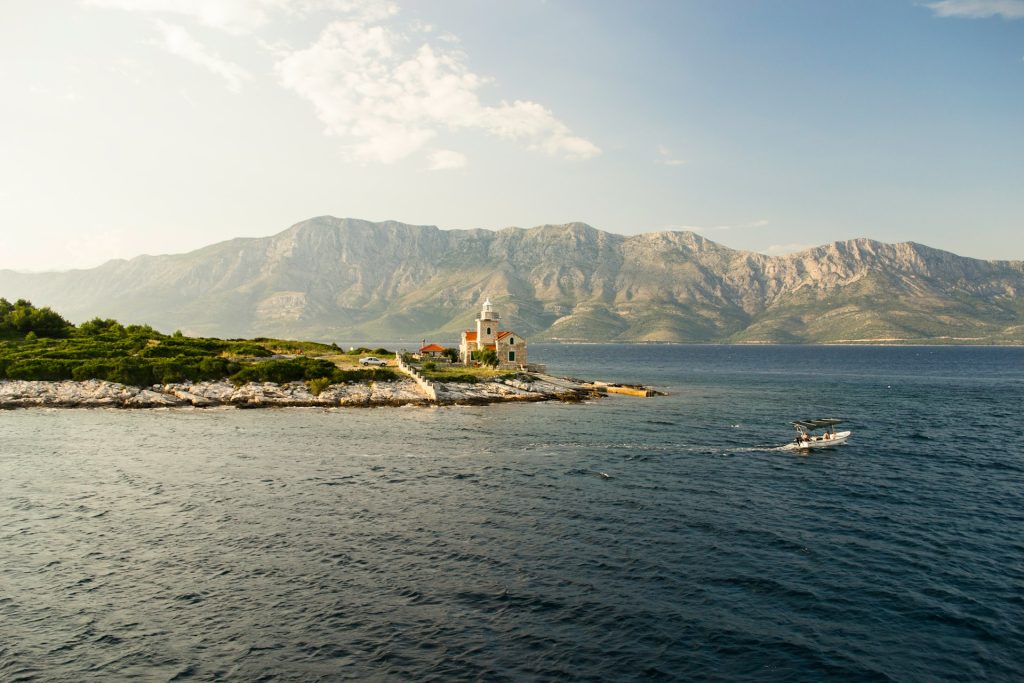
Much like the rest of the coastal Balkan countries, Croatia is also an extremely seasonal destination, receiving most of its tourists during the Summer months, especially in July and August. That being said, it might be a good idea to skip the region during those months, both for the sake of your well-being and your wallet. Plus, the weather will be scorching hot, making it pretty difficult to enjoy the overall experience.
As an alternative, and so that you can still enjoy the beaches and good weather without feeling like you’re walking through ghost towns (with the honorable exception of Zagreb), we suggest booking your visit the shoulder-season, specifically for the period between May-June or September-October.
Croatia Travel Guide – Documents needed for your trip
Since Croatia is part of the EU, British citizens do not need a visa to visit. You’ll just need your passport, which must have been issued within the last 10 years and remain valid for at least 6 months from the date of your trip.
However, keep in mind that starting in mid-2025, British passengers will need to apply for ETIAS in order to enter any EU country.
Croatia Travel Guide – Withdrawals, banking fees and travel budget
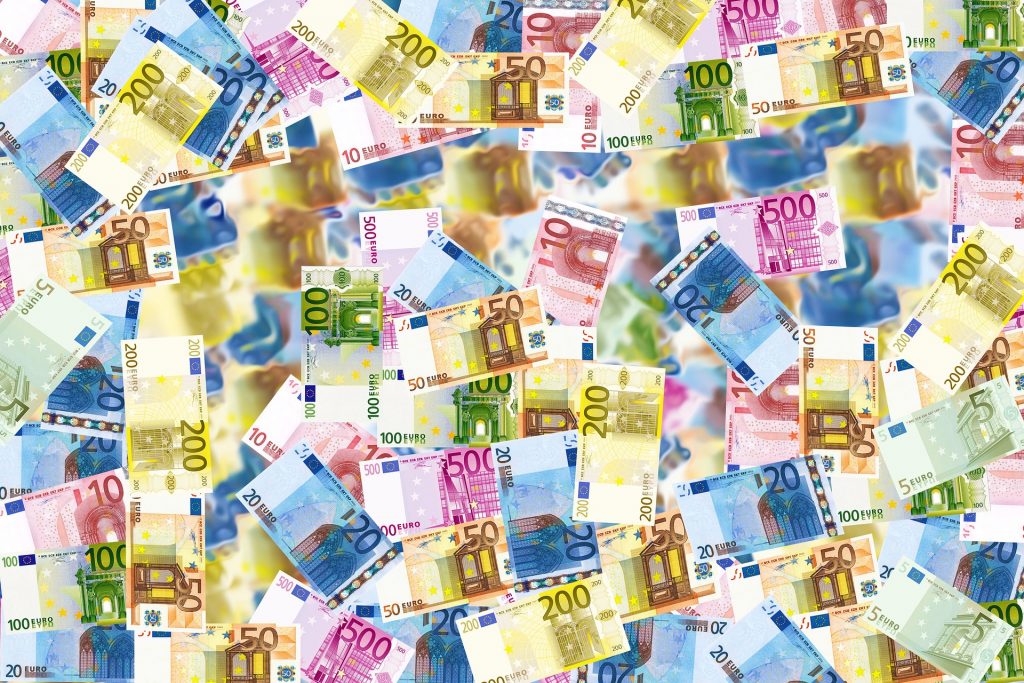
With the Euro (€) as Croatia’s official currency, any withdrawal using a UK bank card might incur in the payment of several different fees. Besides the percentual fee referring to the currency conversion, some UK banks may also charge a flat commission for withdrawals made outside the UK. In some instances, you may well end up paying 5%-6% of your original withdrawal in banking fees.
On the other hand, exchanging money before your trip is not a viable solution either. Besides not being any cheaper, it’s also not safe or wise to carry so much money on you during your trip. As such, we recommend using the services of online banking fintech companies such as Revolut, N26 or Monzo.
Although each have their own limitations and fees, they allow you to withdraw a certain amount in foreign currency without any fees involved. And even after that threshold is reached, costs are much smaller when compared to traditional banks. Sign up for Revolut for free >> to get 3 months of Premium.
Croatia Travel Guide – Common scams and frauds

Unsurprisingly, given its status as a major tourist hotspot, Croatia is an extremely safe destination, so you can roam freely through the country without having to worry too much about your well-being.
However, and much like you would do in any other big city or country, using your common-sense is key. That means no taxis whose drivers refuse to start the meter, no accepting help from strangers when you’re using an ATM or trying to buy metro tickets and always keeping an eye out for your stuff when you’re walking through busy areas. To sum up: don’t do anything you wouldn’t feel comfortable doing in any other city! Specifically in Croatia, pay close attention to your belongings and don’t leave them unattended when going for a swim, especially on the most popular beaches.
Regarding scams and frauds, while there aren’t significant issues to report, it’s recommended to be careful when ordering at restaurants in tourist areas. Always double-check prices on the menu before placing your order, otherwise you may end up with a very unpleasant surprise in hands when the bill arrives.
Where to sleep in Croatia – Hotels and Accommodation
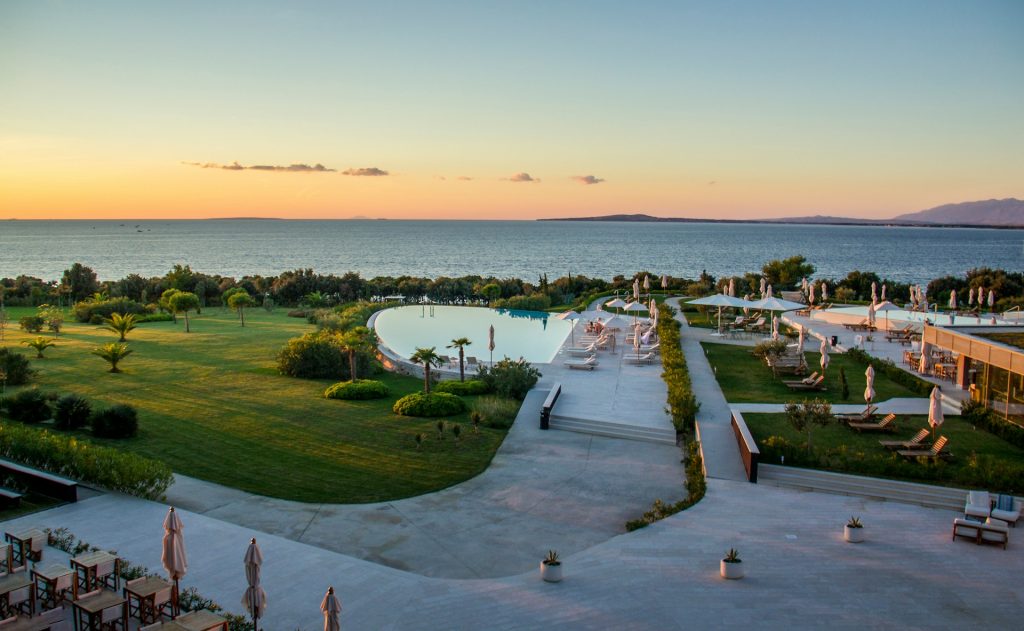
If you’re looking out for a place to stay on our Croatia travel guide, then we got you covered!
Long gone are the days when Croatia was seen as a budget-friendly destination. Unsurprisingly, its rising popularity and demand has led to a significant increase in prices, particularly in accommodations and restaurant menus. Although it hasn’t (yet) reached the extreme levels seen in the most popular destinations across Western Europe, the Adriatic coast is no longer cheap nor affordable.
That being said, here are some options based on the cities we recommend you to stay at:
Hotels in Zagreb
- Hostel – Main Square Hostel
- € – National Plus
- €€ – Best Western Premier Hotel Astoria
- €€€ – Esplanade Zagreb Hotel
Hotels in Zadar
- Hotel – Sky Hostel
- € – Cozy Rooms Luna
- €€ – Hotel Mediteran
- €€€ – Villa Manda Zadar
Hotels in Split
- Hostel – Hostel Book’n’Hook
- € – Hotel Elu Iris
- €€ – Samstag Split
- €€€ – Cora Split
Hotels in Dubrovnik
- Hostel – Hostel Free Bird
- € – Apartments Martha
- €€ – Hotel Ivka
- €€€ – Boutique Hotel Porto
- €€€€ – Royal Blue Hotel
Croatia Travel Guide – Transportation between the airports and the cities
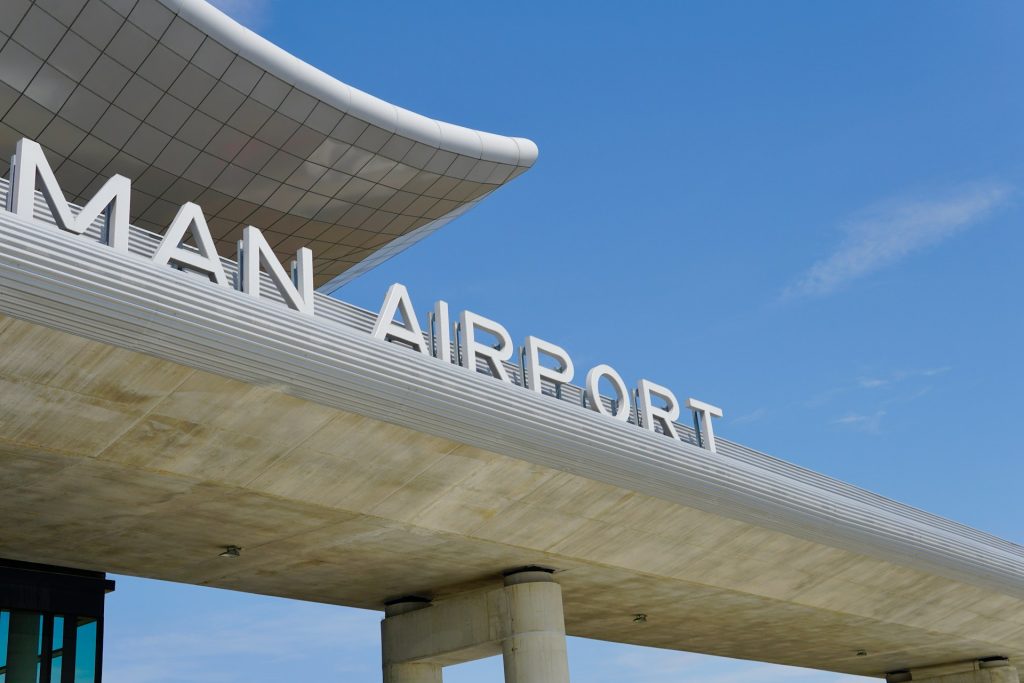
Although passengers can fly into 7 different international airports in Croatia, we’ll focus on the two busiest air hubs in the nation: Zagreb’s Franjo Tuđman Airport and Split’s Sveti Jeronim Airport, each located at opposite ends of the country.
From Zagreb Airport to the city center
Located about 15 km away from the city center, the best way to travel between the airport and the center of Zagreb is aboard bus number 219. The stop is located outside the arrivals’ terminal and the bus operates between 04h20 and 00h15, leaving every 25 to 60 minutes. This line links the airport to Kvartenikov Square, at the heart of the city. As for rates, these will depend on the time of the trip and how you buy your ticket. If you happen to land at night, then the ticket will cost you €1,99, regardless of the purchasing method. On the other hand, if your bus trip takes place during the day and you choose to pay the driver in cash, it will go down to €0,80. Finally, if you download ZET’s app (the bus company) and buy your digital ticket through the platform, the trip fare will be €0,53. Alternatively, you can rely on Croatia Airlines’ shuttle bus. This service is available between 06h00 and 22h30, with a new bus leaving every 30 minutes. In this case, the drop-off point will be Zagreb Bus Station and tickets cost €8,00.
From Split Airport to the city center
Much like the airport in Zagreb, the exact same shuttle bus service is available in Split as well, transporting passengers between the local air hub and the Sukoisan Bus Terminal, a short walk away from the Old Town. The service operates between 06h00 and 22h00, and new shuttles depart every half-hour. As for the price, it’s also the same as in the capital: €8,00! However, if you’re looking out for the cheapest way to reach the city center, then you’ll want to check line 37 of the local bus system. The bus stop is located on the road just outside the airport, so you’ll have to walk to get there. This route runs every day between 04h00 and 23h45, with a new bus passing through every 20 to 40 minutes, depending on the time of day. The final stop is the same as the shuttle (Sukoisan Terminal). You can buy your ticket from the driver for €3,00.
Croatia Travel Guide – Transportation and how to move around between cities

Remarkably, for a country that got its independence just three decades ago following a violent conflict, Croatia actually boasts a diverse and extensive intercity transportation network. In addition to the traditional and reliable bus services, the country also has a railway service (though limited) and an extensive array of sea connections (ferries).
And if all else fails, there’s always the option to rent your own car and hit the road!
Trains in Croatia
While Croatia’s national railway system is somewhat limited and doesn’t reach every corner of the country, it does offer the possibility of traveling between its major cities via train. However, due to infrequent services, long travel times, and the fact that most areas aren’t even covered by the service, this is far from being the most efficient way to explore Croatia.
Be that as it may, you can check schedules and routes and buy tickets online through the official website of Hrvatske Zeljeznice (Croatian Railways). Plus, you won’t even need to print them out, as all you have to do is show them to the inspector on your mobile device. Although we can’t actively recommend traveling by train in Croatia, here is some useful info for the most popular routes:
- Zagreb – Split: €15,10; 6h35
- Zagreb – Rijeka: €7,72; 4h38
- Rijeka – Split: €7,16; 7h53
Buses in Croatia

Unlike trains, buses are the most popular and reliable form of public transportation in Croatia, allowing you to reach virtually every part of the country. Fortunately, the Balkan nation benefits from a wide array of both local and national bus companies, with most services conveniently listed on websites like Croatia Bus, Arriva or GetbyBus. Additionally, the legendary Flixbus also operates within the country.
While you can find all kinds of road conditions, accesses are generally good, though routes along the coastal areas may be slower due to the mountainous terrain. As for the vehicles, buses are usually comfortable and modern enough. As per usual, here are the most popular routes and their respective prices (which may slightly differ across companies):
- Zagreb – Split: €23,00; 5h30
- Zagreb – Zadar: €12,00; 3h30
- Zagreb – Rovinj: €26,00; 5h00
- Rovinj – Pula: €7,50; 00h45
- Pula – Zadar: €30,00; 8h30
- Zadar – Split: €10,50; 3h00
- Split – Dubrovnik: €20,00; 4h30
- Dubrovnik – Zagreb: €31,00; 10h00
Ferries in Croatia

Given Croatia’s weirdly-shaped coastline and the sheer number of islands and islets that form part of its territory, it comes as no surprise that sea transportation is well-established in the country. While numerous ferry companies operate along the coast, the main players are Jadrolinija and Kapetan Luka. However, instead of having to navigate individual websites for each specific route, the website Croatia Ferries provides a convenient platform where you can check times and operators for all connections, everything in a single platform. For ticket purchases, though, we recommend visiting the company’s website directly or use Book Away.
Be that as it may, and in order to give you an idea of what to expect, here are the prices and average travel times for some of the most researched routes:
- Dubrovnik – Hvar: €48,00; 3h30
- Dubrovnik – Korcula: €10,00; 2h00
- Hvar – Korcula: €6,00; 1h30
- Split – Hvar: €25,00 (one daily departure for €6,00); 1h00
- Pula – Zadar: €22,00; 4h45
Renting a car in Croatia

There’s no denying it – when it comes to comfort, freedom and flexibility, there’s no better option than renting your own vehicle. Plus, although driving along the coastal areas may be slower than what you’re used to, the landscapes are often quite charming.
However, depending on your preferences and route, a car can also bring additional challenges. In major cities, like Zagreb, Split or Dubrovnik, finding a parking spot can be a hassle, and it’s pretty much a given that you’re going to have to pay for it. Additionally, if your itinerary includes islands like Hvar or Korcula, be prepared to cover substantial extra fees to bring your car aboard. In the end, I’s about weighing in these pros and cons, especially since public transportation in Croatia is quite decent and very reliable. Lastly, as the country is part of the EU, it’s worth noting that you won’t need an International Driving Permit – your standard license will be enough.
You can browse for prices and models at Rentalcars.com!
Croatia Travel Guide – Free walking tours in Zagreb and Dubrovnik

While in Croatia, you have the option to explore any of the local cities with a free walking tour. These tours, led by local guides or tour companies, offer guided visits to the historic centers, sharing intriguing stories about each place and providing valuable cultural context. Even though these tours are technically free, it’s customary to show appreciation for the guide’s efforts by leaving a tip at the end. In both Zagreb and Dubrovnik, a reasonable minimum tip would be around 5,00€.
That being said, here are a few companies that run free walking tours in both cities.
Free Walking Tours in Zagreb
Free Walking Tours in Dubrovnik«
Best Beaches in Croatia

Zlatni Rat: Tucked away on the island of Brac, a stone’s throw from famous Hvar, this beach is hailed as Croatia’s finest and most beautiful. With a shoreline of sand and pebbles stretching several hundred meters into the sea, it has this “Caribbean” quality to it!
Plaža Banje: Although there are several beaches around the Old Town of Dubrovnik, Plaža Banje stands out as the most popular stretch of sand in Croatia’s most famous tourist destination. A short distance to the east, you can also explore Sveti Jakov Beach.
Betina Cave: Nestled inside a small cave (hence its name), this tiny beach is one of Croatia’s most peculiar. Funny enough, there’s no land access, so the only way to reach it is by a quick water taxi ride.
Makarska Riviera: One of the several regions that make up the stunning Croatian Adriatic coast, there are many top-class beaches to be found along the Makarska Riviera. Notable mentions include Punta Rata and Nugal Beach.
Hawaii Beach: Although one can find countless great beaches across the Istrian Peninsula, the southern region, near Pula, is where there is a higher concentration of prime bathing spots. Hawaii Beach is just one example, but you can venture further to explore the idyllic corners of the Kamenjak National Park or the Verudela Gorge.
Bacvice Beach: Is this the most beautiful or idyllic beach in Croatia? Well, far from it… but when the scorching sun hits in a bustling city like Split, there’s no better spot for a quick, refreshing swim.
Plaža Dubovica: When going to the beach requires walking along dirt roads and rocky trails, you know you’re in for something extraordinary! Dubovica Beach is no different, standing out as the most beautiful and iconic in Hvar.
Sakarun Beach: Located on the island of Dugi Otok, a mere 90-minute ferry ride from the Port of Zadar, this awe-inspiring beach can go neck-to-neck with Zlatni Rat (in Brac) for the title of Croatia’s most pristine spot. In fact, it may even rank among Europe’s most beautiful beaches!
Nin Beach: A group of beaches stretching along a beautiful bay, this is considered one of the most romantic places in the Balkans. Plus, located just 20 km away from Zadar, Nin is far more accessible than Brac or Dugi Otok.
Bacva Bay: Though – like most Croatian beaches – the ground is made of pebbles and stones, Bacva Bay remains one of Korcula’s most stunning and pleasant beaches. Just remember to pack your flip-flops and you’ll be ok!
Croatia Travel Guide – Local food and traditional dishes

Given its prime location along the rugged Adriatic coast, it’s no wonder that fish and seafood form a significant part of the Croatian diet. Besides, the Mediterranean tradition is also highly influential around these parts, which is why you can expect to find high-quality olive oil, fresh fruits and vegetables, as well as pasta and pizzas as result of the geographical proximity to Italy. However, it’s important to note that a substantial part of the country (Zagreb and the north) is actually located far away from the sea, and those are the regions where cuisine tends to be heartier, with a lot of meat, sausages and potatoes. That said, and out of all the Croatian dishes, perhaps none is as popular as Ćevapi, elongated meatballs seasoned with spices, typically served with Lepinja bread and Ajvar, a red pepper-based condiment. In fact, this dish is a staple across pretty much all of the former Yugoslavian republics (not just Croatia). As for the fish, the most popular dish is definitely the Risotto Negro, made with squid or cuttlefish and colored with animal’s ink.
Beyond these two revered classics, other Croatian specialties well worth trying include Punjena Paprika, a dish of stuffed peppers; Sarma, minced meat wrapped in cabbage leaves; Brudet, a rice and fish stew with a tomato-based broth; Buzara, mussels cooked in a sauce of white wine, garlic and breadcrumbs; and Pasticada, marinated beef slowly cooked in a gravy of plums, figs and wine, usually served with gnocchi. For tapas and other lighter bites, make sure to try out Soparnik, a savory pie filled with chard, garlic and parsley; Burek, another Balkan classic consisting of several layers of phyllo pastry with meat or cheese filling (there’s a similar Croatian version called Strukle); and platters featuring locally sourced ingredients, such as Kulen Sausage, Istrian Truffles, Duba Prosciutto, Pag Cheese or Boskarin Carpaccio.
As for desserts, and although it’s not exactly Croatia’s strong suit, don’t miss out on trying some Fritule, small doughnuts; Rozata, a caramel pudding with rose liqueur; Madjarica, a layered chocolate cake; or a Kremšnita, a local take on the classic mille-feuilles. At the end of your meal, round things off with a glass of Rakia, a super popular brandy in this part of Europe.
Croatia Travel Guide – Full itineraries for 7, 10 and 14 days
So that this blog post doesn’t turn into an encyclopedia, we’ve decided to create separate articles for each itinerary.
You can check them through the following links:
- Croatia 7-Day Itinerary – What to See and Do in One Week
- Croatia 10-Day Itinerary – Best Places to Visit in the Country
- Croatia 14-Day Itinerary – Highlights of Two Weeks in Croatia
Heymondo offers a wide range of travel assistance insurance policies. They combine the best quality, service and price with various levels of coverage, so you’re covered on your weekend getaways and long trips. Buy insurance »





